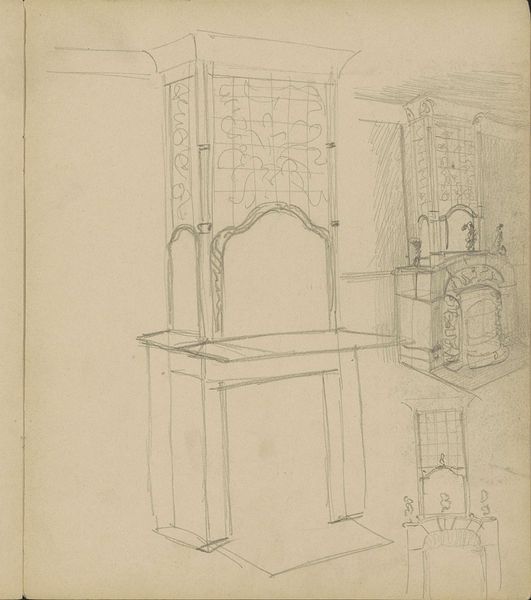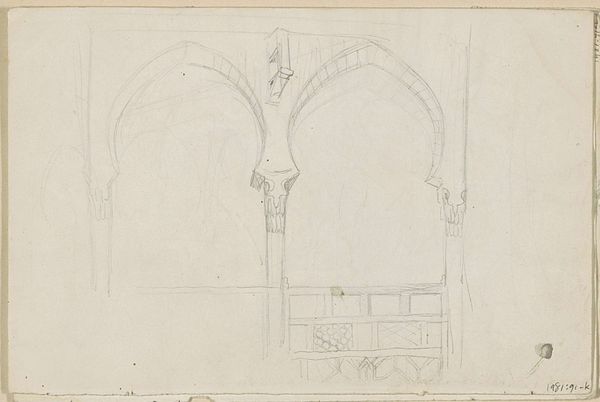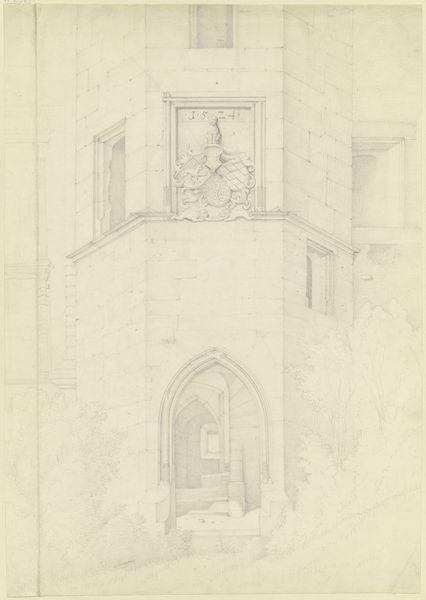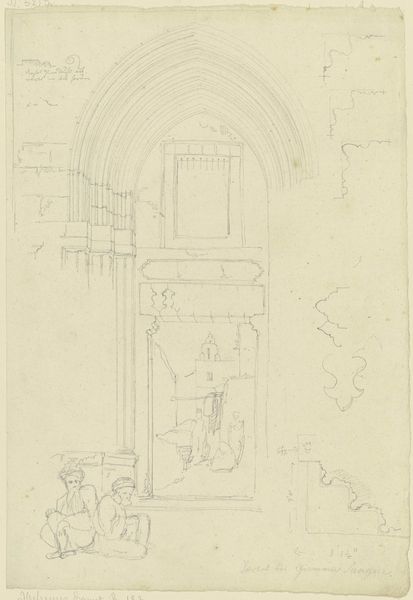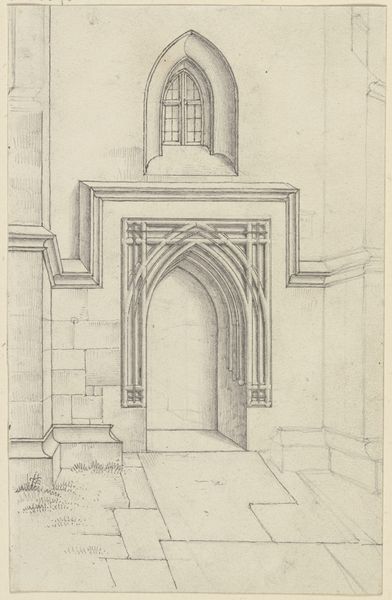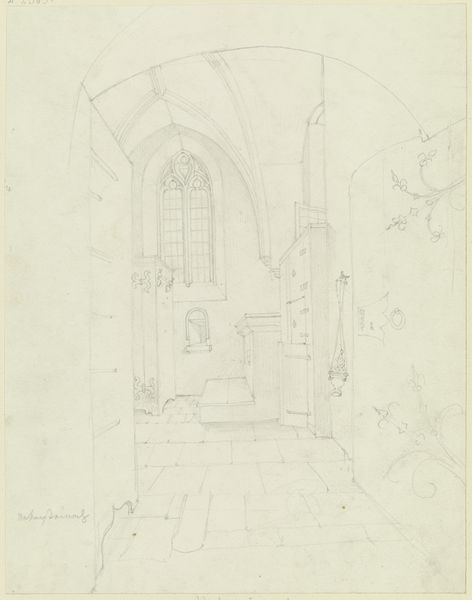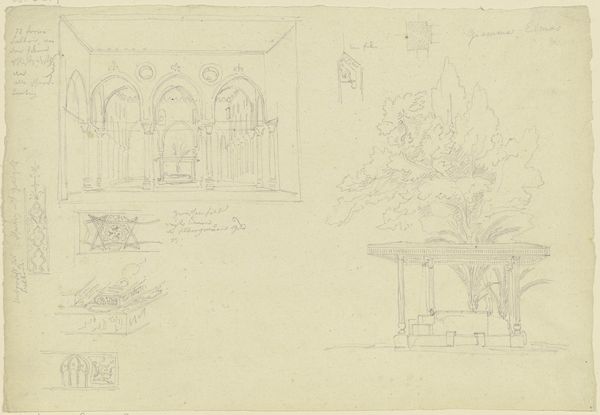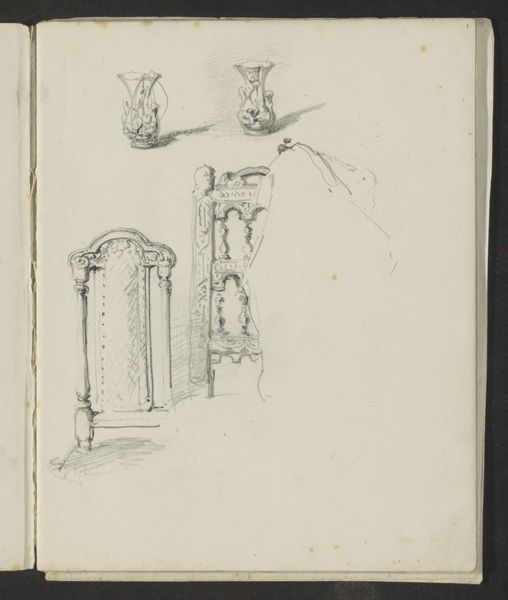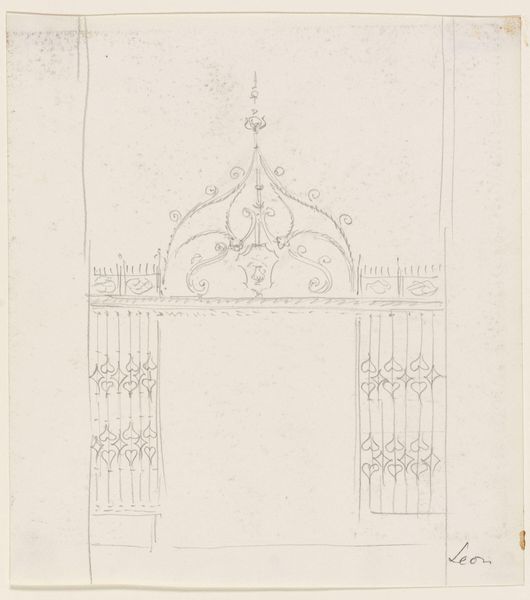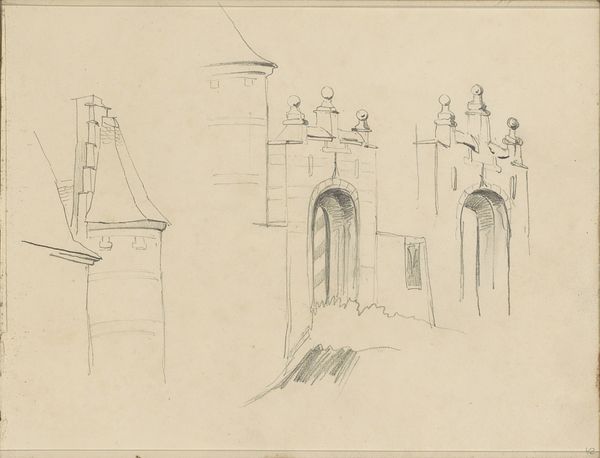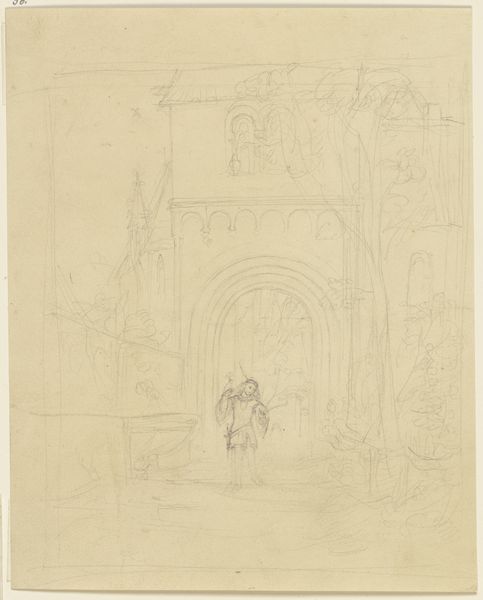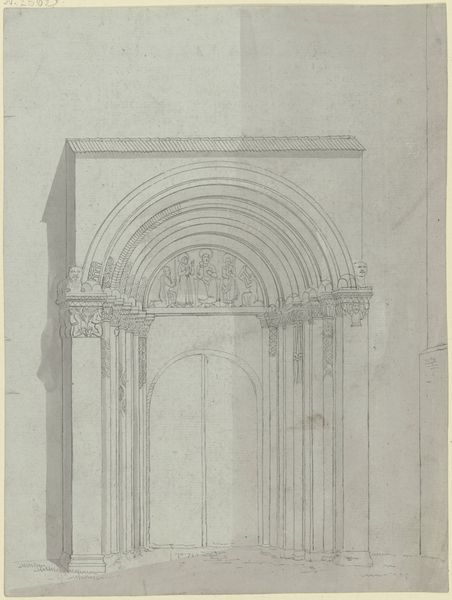
drawing, pencil, architecture
#
drawing
#
16_19th-century
#
pencil
#
architecture
Copyright: Public Domain
Editor: Here we have Karl Ballenberger’s "Dorfkirche nächst Rattenberg in Tirol", a pencil drawing from the 19th century. It has an ethereal quality to it, almost like an architectural ghost. What structural elements stand out to you? Curator: I am drawn to the precision and clarity of the lines. Observe how Ballenberger uses delicate hatching to define form and create depth. Note particularly the way the arch is delineated using these lines and negative space around it. The careful arrangement contributes to the drawing's structural integrity. Do you observe any compositional strategies? Editor: The focus on a single doorway is quite striking. The bare surroundings force us to consider the lines, depth and ornamental structure around the church entrance, a symbolic entry-point to a spiritual world. Curator: Precisely. By isolating the doorway, Ballenberger compels us to scrutinize its form and consider the geometry underlying the composition. What semiotic significance might we draw from that geometry? Editor: I'm not sure, but focusing on geometric structure makes the artwork's transcendental qualities even more intense, while it almost looks bare as an architectural document. It's fascinating how much a formal approach can reveal about something so simple. Curator: Indeed, through rigorous attention to form, line, and composition, we unveil the complexities of what is depicted in plain sight. This drawing is more than a church, it's a network of carefully balanced, architecturally informed aesthetic properties.
Comments
No comments
Be the first to comment and join the conversation on the ultimate creative platform.
